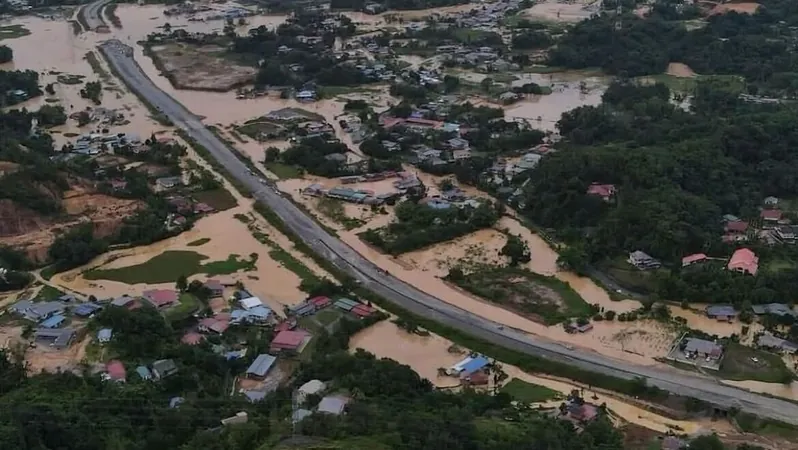
Tragic Sabah Landslide Claims 12 Lives: A Harbinger of the 'New Normal' in Southeast Asia
2025-09-16
Author: Mei
In a heart-wrenching turn of events, at least 12 lives have been lost in Sabah, Malaysia, following relentless rainfall that has unleashed devastating floods and landslides across the region since Friday, September 12. This disaster is yet another stark reminder of the increasing climatic challenges plaguing Southeast Asia.
Prime Minister Anwar Ibrahim has sprung into action, ordering federal assistance for the Sabah state government. He committed an immediate RM10 million (approximately US$2.38 million) through the National Disaster Management Agency to aid flood victims, emphasizing his empathy for those suffering from this torrential disaster.
An environmental expert has raised alarm bells, indicating that the region may be facing a 'new normal'—more frequent and unpredictable rainfall patterns due to climate change and rapid urban development. "What we are witnessing isn't just an uptick in flooding; it's the chaos of unpredictable weather wreaking havoc on our infrastructure and lives," stated Renard Siew, a climate change adviser.
Recent days have seen a surge in extreme weather across Southeast Asia. Just last week, Bali experienced its most severe flooding in years, resulting in the tragic deaths of at least 17 individuals. The situation is dire, with Typhoon Kajiki earlier this month culminating in fatalities in both Vietnam and Thailand due to landslides.
In Sabah, the lifeless bodies of seven individuals, including four children, were recovered from a landslide at Kampung Cenderakasih in Inanam on Monday morning, marking a grim milestone in the ongoing crisis. The village, a mere 10 kilometers from Kota Kinabalu's city center, has become emblematic of the region's vulnerabilities.
As the death toll rises, so too does the number of displaced individuals—with 2,533 residents from 668 families now impacted by the floods. Local authorities confirm the devastation spans across 46 villages in Sabah, particularly hitting low-lying areas prone to flooding.
Residents are now balancing hope with trepidation; while the rains have eased and floodwaters recede, fears of additional downpours linger. As one inhabitant, Oliver Golingai, poignantly remarked, "Celebrating is the last thing on our minds; we’re just focusing on survival and cleanup.'
In Bali, the repercussions have been just as catastrophic, with authorities estimating losses around 28.9 billion rupiah (US$1.76 million) as recovery efforts ramp up after severe flooding decimated public facilities and infrastructures.
Beyond Malaysia and Indonesia, the broader Southeast Asian region is grappling with the fallout from climate change. Historical weather trends have shifted, intensifying the impacts of monsoons and increasing the frequency of natural disasters. As Siew emphasized, it's crucial to upgrade early warning systems and implement climate-resilient urban planning.
With these escalating threats looming on the horizon, Southeast Asia encounters a critical juncture—adapting to an unpredictable climate may very well define the future for millions.


 Brasil (PT)
Brasil (PT)
 Canada (EN)
Canada (EN)
 Chile (ES)
Chile (ES)
 Česko (CS)
Česko (CS)
 대한민국 (KO)
대한민국 (KO)
 España (ES)
España (ES)
 France (FR)
France (FR)
 Hong Kong (EN)
Hong Kong (EN)
 Italia (IT)
Italia (IT)
 日本 (JA)
日本 (JA)
 Magyarország (HU)
Magyarország (HU)
 Norge (NO)
Norge (NO)
 Polska (PL)
Polska (PL)
 Schweiz (DE)
Schweiz (DE)
 Singapore (EN)
Singapore (EN)
 Sverige (SV)
Sverige (SV)
 Suomi (FI)
Suomi (FI)
 Türkiye (TR)
Türkiye (TR)
 الإمارات العربية المتحدة (AR)
الإمارات العربية المتحدة (AR)